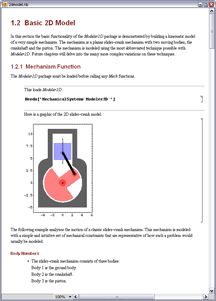
Click to Enlarge |
 |
MechanicalSystems contains a library of two- and
three-dimensional
geometric constraints that can be used to model mechanical relationships.
And, custom algebraic constraints can be defined to model nongeometric or
control relationships. |
 |
| MechanicalSystems' cam constraints support both
analytic
and mapped cam profiles. |
 |
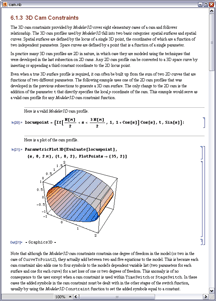
Click to Enlarge |
 |
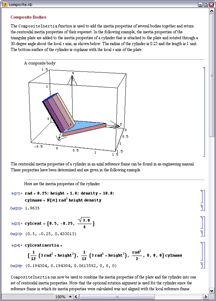
Click to Enlarge |
 |
If mass properties are defined for the bodies
in a model, MechanicalSystems can calculate the inertial loads on
the model and the resulting reaction forces. |
 |
| After building a model, the next step is
running it. In this particular case, the constraint equations are solved
for a certain crank angle, and the coordinants of each of the bodies of
the model are returned. |
 |
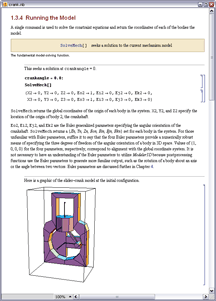
Click to Enlarge |
 |

Click to Enlarge |
 |
MechanicalSystems uses gear constraints to model nominal gear relationships (i.e., only the nominal rotary motion is modeled, not the tooth-to-tooth interactions of an involute gear set; however, a single pair of involute gear teeth can be modeled as a pair of cam surfaces).
|
 |
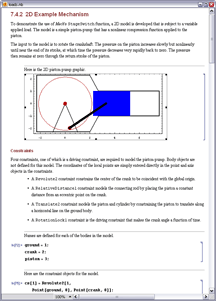
Click to Enlarge |
 |
By applying loads to a model, one can solve for static reaction forces
at mechanism joints.
|
 |
|
MechanicalSystems performs motion analysis of underconstrained
systems including static equilibrium analysis as well as velocity equilibrium analysis.
|
 |

Click to Enlarge |
 |
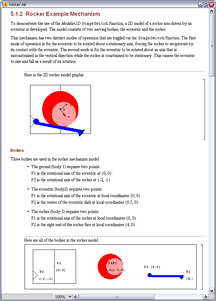
Click to Enlarge |
 |
MechanicalSystems also includes advanced methods of kinematic modeling such as multistage mechanisms.
|
 |
|
Object-oriented, model-building commands can be used to easily assemble constraints into a complete mechanism that can be solved for component position, velocity and acceleration.
|
 |
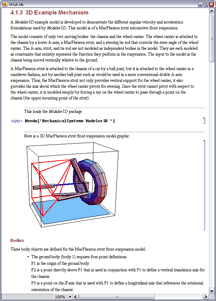
Click to Enlarge |